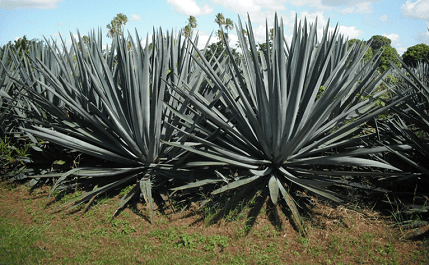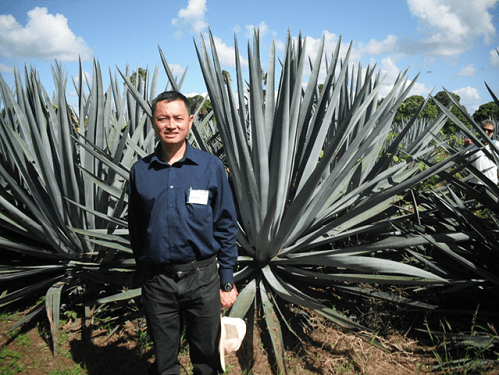
Agave (Agave tequilana) is used to make tequila – and could be an efficient source of ethanol.
THE agave plant used to make tequila could be established in semi-arid Australia as an environmentally friendly solution to Australia’s transport fuel shortage, a team of researchers at the University of Sydney, University of Exeter and University of Adelaide has found.
The efficient, low-water process could also help produce ethanol for hand sanitiser, which is in high demand during the COVID-19 pandemic.
Agave is a succulent with a large rosette of thick leaves and a shallow root system. It grows primarily in Mexico but is also found in parts of the United States and central and tropical South America.
In an article published this week in the Journal of Cleaner Production, University of Sydney agronomist Associate Professor Daniel Tan with international and Australian colleagues have analysed the potential to produce bioethanol (biofuel) from the agave plant, a high-sugar succulent widely grown in Mexico to make the alcoholic drink tequila.
Associate Professor Tan said the agave plant was now being grown as a biofuel source on the Atherton Tablelands in Far North Queensland by MSF Sugar, and it promises some significant advantages over existing sources of bioethanol such as sugarcane and corn.
“Agave is an environmentally friendly crop that we can grow to produce ethanol-based fuels and healthcare products,” Associate Professor Tan said.
“It can grow in semi-arid areas without irrigation; and it does not compete with food crops or put demands on limited water and fertiliser supplies. Agave is heat and drought tolerant and can survive Australia’s hot summers.”

Associate Professor Daniel Tan
Potential for semi-arid zone
Lead author Dr Xiaoyu Yan from the University of Exeter, who led the lifecycle assessment, said: “Our analysis highlights the possibilities for bioethanol production from agave grown in semi-arid Australia, causing minimum pressure on food production and water resources.
“The results suggest that bioethanol derived from agave is superior to that from corn and sugarcane in terms of water consumption and quality, greenhouse gas emissions, as well as ethanol output.”
The study used chemical analyses of agave from a pilot agave farm in Kalamia Estate, Queensland (near Ayr) undertaken by Dr Kendall Corbin for her University of Adelaide PhD, supervised by Professor Rachel Burton.
“It is fabulous that the results of my chemical analysis can be used in both an economic and environmental footprint study and have real-world applications”, Dr Corbin said.
Associate Professor Tan said the economic analysis suggested that a first generation of bioethanol production from agave was currently not commercially viable without government support, given the recent collapse in the world oil price.
“However, this may change with the emerging demand for new ethanol-based healthcare products, such as hand sanitisers,” he said.
“This is the first comprehensive lifecycle assessment and economic analysis of bioethanol produced from a five-year agave field experiment in north Queensland. Our analysis shows a bioethanol yield of 7414 litres a hectare each year is achievable with five-year-old agave plants.”
Outperforms sugarcane, corn
The study found that sugarcane yields 9900 litres a hectare each year. However, agave outperforms sugarcane on a range of measures, including freshwater eutrophication, marine ecotoxicity and – crucially – water consumption.
Agave uses 69 per cent less water than sugarcane and 46pc less water than corn for the same yield. For United States corn ethanol, the yield was lower than agave, at 3800 litres a hectare a year.
“This shows agave is an economic and environmental winner for biofuel production in the years to come,” Associate Professor Tan said.
Source: University of Sydney
The paper ‘Agave: a promising feedstock for biofuels in the water-energy-food-environment (WEFE) nexus’ is published in the Journal of Cleaner Production
Grain Central: Get our free daily cropping news straight to your inbox – Click here

Why no mention of agave’s weediness? “Century plant (Agave americana) is regarded as an environmental weed in Victoria, New South Wales, South Australia, Western Australia and Queensland, and as a potential environmental weed or “sleeper weed” in the Northern Territory.” Is commercial cropping of weeds a good idea? https://weeds.brisbane.qld.gov.au/weeds/century-plant